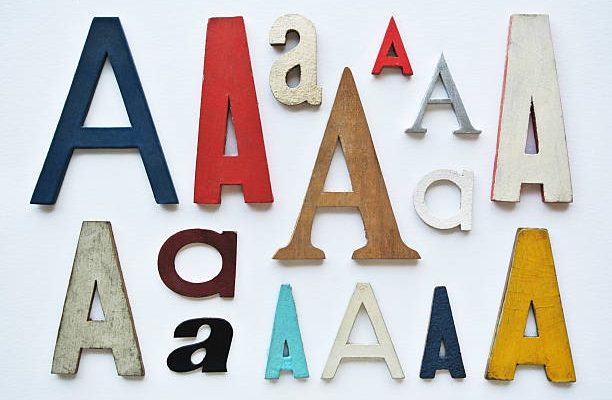Serif vs Sans Serif
Any brand today has to establish how it wants to communicate the values and the proposition to its audience, and one of the most critical aspects of design is the selection of typeface. When there are only two main categories of fonts, namely serif and sans serif, knowing which one is appropriate for your brand can be a lifesaver when it comes to changing people’s perceptions and getting them interested. We’ll look at some of the differences between serif and sans serif fonts, how each type may affect your brand, and what circumstances to bear in mind.
What is Versus Serif and Sans Serif?
Serif Fonts
Serif fonts have those tiny strokes at the baselines of characters known as serif. These additional details provide serif fonts with an elegant prepossessing of an antique or early twentieth-century look. Serif fonts have a classic look and are well liked for their formal, professional, and just slightly cosmopolitan tone. Traditionally, these fonts were used a lot more in print media, including newspapers, books, and magazines, because of their readability in large chunks of text.
Sans Serif Fonts
The opposite of the above is available in the sans serif fonts, which do not have these added decorative aspects, making them look more contemporary. “Sans” in French means “without,” so “Sans serif” as translates to without serif’. Thus, some of the commonly used sans-serif fonts are Arial, Helvetica, as well as Verdana. It is also popular with digital designs due to its legibility on screens and because of the less complicated look of the style that corresponds to modern trends. Organizations targeting clients with innovative, streamlined, or young-looking products use sans-serif fonts.
Serif vs Sans Serif: Which One Represents Your Brand?
Deciding between having serifs and not requires a consideration of the potential the font family holds in shaping opinions of your brand. Here are some factors that can help you decide:
The following factor to look at when identifying a brand’s personality is:
The nature of the personality of the brand is one of the major factors that define the Serif vs. Sans Serif contest. If your business has an old-school and official type of image that reflects serious business like a law firm, a financial organization, or luxury products, the use of a serif font may be really suitable for it. Tiny serifs applied to text enhance the authority and professionalism, which is great for businesses that prefer traditional values.
On the contrary, if your brand is friendly, forward-thinking, and high tech—think startups, social media companies, or specializing in the lifestyle sector—it might be more appropriate to use a sans serif font. Sans serif fonts being simpler send a message of transparency, simplicity, and a business-like approach more appealing to the contemporary consumer.
Perception towards the target audience and its preferences
Knowing your audience is always an important factor when deciding between serif and sans-serif fonts. Older audiences would state that serif fonts might be used, not because of the suitability of their screen display but because they are used so widely in print media. Serif fonts have a comforting feel to them; years of reading printed books and newspapers make them comfortable with those fonts. On the same note, older, more traditional audiences may not appreciate the PowerPoint templates that have sans-serif fonts, as these fonts are customary in online experiences.
Where the Font Will Appear
Consider the places where your brand messages are going to be most effective. As previously mentioned, serif fonts perform exceptionally well when it comes to printed documents or any content that consists of lengthy chunks of text, since the additional strokes help the reader’s line of sight when it comes to the kind of texts that are quite compact and so occupy a lot of spaces as are in continuous oblongs. Therefore, if your brand uses weekly, monthly, or even quarterly reporting, hardcopy brochures, or even the more formal style of newsletters, serifs can be optimal.
For websites, applications, and other digital contents wherein the users expect faster and instant readout, sans-serif fonts are preferred. Due to our ability to read content devoid of unnecessary flourishes, sans-serif fonts are appropriate for the small screen and touch interface devices commonly found in mobile use.
The Tone of Your Content
Another factor that defines the Serif vs. Sans Serif decision is the tone of your brand content. A brand that uses a more corporate style voice is likely to get along better with serif fonts. On the other hand, if your brand messaging harkens to the idea of being conversational, classy, or even playful, a sans-serif font may work best here.
Pros and Cons of Serif Fonts
Pros of Serif Fonts:
- Perfect for works that are typed and for texts that are longer.
- Favors a vintage, professional image.
- Promotes trust and reliability in products.
Cons of Serif Fonts:
- May seem to be dull for contemporary organizations.
- Might not be as easy on sight on small screens or devices such as computer screens and mobiles.
- While Sans Serif typeface gives some benefits, there is a vice versa as well.
Pros of Sans Serif Fonts:
- Best experienced on screen and especially on mobile devices.
- Gives a modern, general minimalist look.
Cons of Sans Serif Fonts:
- May appear unsuitable for some conventional or premium products.
- May not have the same character or warmth as that of the serif fonts.
Combining serif and sans serif: A Balanced Approach
It seems that quite often registering/branding ones combines the fonts with serif and without it. For instance, you can use serif font type for the headings or logos for authority and then use the sans serif font for the body text, especially for digital use, to be more readable. This gives the client the capacity to set up both the corporate image as well as the friendly image all in one neat package.
Conclusion: Serif vs Sans Serif—Finding the Perfect Fit
The Serif vs. Sans Serif choice may sometimes not appear very important, and yet it alters the view people have of your brand. Branded content is about asking questions such as: What do we, as a brand, stand for? What is popular amongst our target audience? In what channel does YOUR content work best? Whether one decides to use serif, no-serif, or both, your font will contribute to creating the right, recognizable, and unaltered brand image.
FAQs
Which type of fonts are better serif or sans serif fonts, and what is the major distinction between these two categories?
As it will be mentioned further, serif fonts comprise of teeth or special terminal embellishments at the ends of letters, whereas sans serif fonts don’t and appear more modern.
Is it possible to have a serif font for my brand name and have a sans serif font to accompany it?
Of course, if that’s what you’d like, you can get both to make your outfit appear well-proportioned. Serif is suitable to be used for headlines, logos, or print, while non-serif fonts are suitable to be used for read blocks, computers, or trendy and classic looking.




